Search This Blog
Nasa Building

Reciprocal Links - Contact Me
or Contact below Email address,We will add your link.
Email Me: nasaspaceinfo@gmail.com
Nasa Space Station

NASA's planned heavy-lift cargo rocket

NASA Earthrise

Nasa ares rocket

shuttle launch
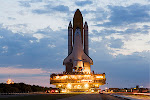
Space Shuttle Exploration
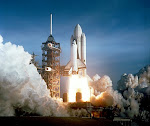
Space Station Followers
Nasa International Space Station

Nasa first man on the moon

NASA First Launch Rocket

Space Station

shuttle mission
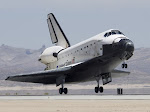
Blog Archive
-
▼
2009
(173)
-
▼
September
(9)
- Kim Martucci Talks with NASA and NOAA about the la...
- Radar Map of Buried Mars Layers Matches Climate Cy...
- NASA Selects Target Crater for Lunar Impact
- This Week @ NASA 091109
- Best International Space Station Photos
- Discovery ends ISS mission in Mojave Desert
- Berlin TV tower 'stolen' by Nasa
- NASA Lunar Reconnaissance Snapped
- Astronauts Informed of Possible Conjunction Maneuver!
-
▼
September
(9)
Nasa stars
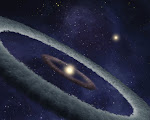
Space Station
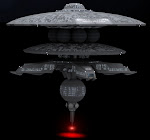
space exploration

Thursday, September 24, 2009
Tuesday, September 22, 2009
Radar Map of Buried Mars Layers Matches Climate Cycles
 at
1:50 AM
Posted by
Anonymous
at
1:50 AM
Posted by
Anonymous
 0
comments
0
comments

New, three-dimensional imaging of Martian north-polar ice layers by a radar instrument on NASA's Mars Reconnaissance Orbiter is consistent with theoretical models of Martian climate swings during the past few million years.
Alignment of the layering patterns with the modeled climate cycles provides insight about how the layers accumulated. These ice-rich, layered deposits cover an area one-third larger than Texas and form a stack up to 2 kilometers (1.2 miles) thick atop a basal deposit with additional ice.
"Contrast in electrical properties between layers is what provides the reflectivity we observe with the radar," said Nathaniel Putzig of Southwest Research Institute, Boulder, Colo., a member of the science team for the Shallow Radar instrument on the orbiter. "The pattern of reflectivity tells us about the pattern of material variations within the layers."
Earlier radar observations indicated that the Martian north-polar layered deposits are mostly ice. Radar contrasts between different layers in the deposits are interpreted as differences in the concentration of rock material, in the form of dust, mixed with the ice. These deposits on Mars hold about one-third as much water as Earth's Greenland ice sheet.
Putzig and nine co-authors report findings from 358 radar observations in a paper accepted for publication by the journal Icarus and currently available online.
Their radar results provide a cross-sectional view of the north-polar layered deposits of Mars, showing that high-reflectivity zones, with multiple contrasting layers, alternate with more-homogeneous zones of lower reflectivity. Patterns of how these two types of zones alternate can be correlated to models of how changes in Mars' tilt on its axis have produced changes in the planet's climate in the past 4 million years or so, but only if some possibilities for how the layers form are ruled out.
"We're not doing the climate modeling here; we are comparing others' modeling results to what we observe with the radar, and using that comparison to constrain the possible explanations for how the layers form," Putzig said.
The most recent 300,000 years of Martian history are a period of less dramatic swings in the planet's tilt than during the preceding 600,000 years. Since the top zone of the north-polar layered deposits -- the most recently deposited portion -- is strongly radar-reflective, the researchers propose that such sections of high-contrast layering correspond to periods of relatively small swings in the planet's tilt.
They also propose a mechanism for how those contrasting layers would form. The observed pattern does not fit well with an earlier interpretation that the dustier layers in those zones are formed during high-tilt periods when sunshine on the polar region sublimates some of the top layer's ice and concentrates the dust left behind. Rather, it fits an alternative interpretation that the dustier layers are simply deposited during periods when the atmosphere is dustier.
The new radar mapping of the extent and depth of five stacked units in the north-polar layered deposits reveals that the geographical center of ice deposition probably shifted by 400 kilometers (250 miles) or more at least once during the past few million years.
"The radar has been giving us spectacular results," said Jeffrey Plaut of NASA's Jet Propulsion Laboratory, Pasadena, Calif., a co-author of the paper. "We have mapped continuous underground layers in three dimensions across a vast area."
The Italian Space Agency operates the Shallow Radar instrument, which it provided for NASA's Mars Reconnaissance Orbiter. The orbiter has been studying Mars with six advanced instruments since 2006. It has returned more data from the planet than all other past and current missions to Mars combined. For more information about the mission, visit: http://www.nasa.gov/mro.
Sunday, September 20, 2009
NASA Selects Target Crater for Lunar Impact
 at
12:41 AM
Posted by
Anonymous
at
12:41 AM
Posted by
Anonymous
 0
comments
0
comments

NASA's Lunar Crater Observation and Sensing Satellite (LCROSS) is racing toward a double-impact on the moon at 7:30 am EDT on Oct. 9th. Today NASA announced exactly where the crash will take place.
The target crater is Cabeus A. It was selected after an extensive review of the best places to excavate frozen water at the lunar south pole.
"The selection of Cabeus A was a result of a vigorous debate within the lunar science community. We reviewed the latest data from Earth-based observatories and our fellow lunar missions Kaguya, Chandrayaan-1, and the Lunar Reconnaissance Orbiter," says Anthony Colaprete, LCROSS project scientist and principle investigator at NASA's Ames Research Center. "The team is looking forward to wealth of information this unique mission will produce."
LCROSS will search for ice by plunging its spent upper-stage Centaur rocket into the permanent shadows of Cabeus A, where water might be trapped in frozen form. The LCROSS satellite will then fly into the plume of debris kicked up by the impact and measure the properties of the plume before it also collides with the lunar surface.
The LCROSS team selected Cabeus A based on a set of conditions that includes favorable illumination of the debris plume for visibility from Earth, where astronomers will be watching closely. Cabeus A also has a high concentration of hydrogen (a constituent of water, H2O) and favorable terrain such as a flat floor, gentle slopes and the absence of large boulders.
Professional astronomers will use many of Earth's most capable observatories to monitor the impacts. These observatories include the Infrared Telescope Facility and Keck telescope in Hawaii; the Magdalena Ridge and Apache Ridge Observatories in New Mexico and the MMT Observatory in Arizona; the newly refurbished Hubble Space Telescope; and the Lunar Reconnaissance Orbiter, among others.
Amateur astronomers can monitor the impact, too. Observing tips may be found here.
"Telescopes participating in the LCROSS Observation Campaign will provide observations from different vantage points using different types of measurement techniques," says Jennifer Heldmann, lead for the LCROSS Observation Campaign at Ames. "These multiple observations will complement the LCROSS spacecraft data to help determine whether or not water ice exists in Cabeus A."
During a media briefing Sept. 11, Daniel Andrews, LCROSS project manager at Ames, provided a mission status update: The spacecraft is healthy and has enough fuel to successfully accomplish all mission objectives. Andrews also announced the dedication of the LCROSS mission to the memory of legendary news anchor, Walter Cronkite, who provided coverage of NASA's missions from the beginning of America's manned space program to the age of the space shuttle.
"Dad would sure be proud to be part, if just in name, of getting humans back up to the moon and beyond," says Chip Cronkite, son of the famed news anchor.
"We're looking forward to October 9th," Andrews says. "The next 28 days will undoubtedly be very exciting."
Cabeus A, here we come!
Thursday, September 17, 2009
Tuesday, September 15, 2009
Best International Space Station Photos
 at
12:15 AM
Posted by
Anonymous
at
12:15 AM
Posted by
Anonymous
 0
comments
0
comments
The International Space Station (ISS) is a research facility currently being assembled in Low Earth Orbit. On-orbit construction of the station began in 1998 and is scheduled to be complete by 2011, with operations continuing until at least 2015. As of 2009, the ISS is the largest artificial satellite in Earth orbit, with a mass larger than any previous space station.

The ISS is a joint project among the space agencies of the United States (National Aeronautics and Space Administration - NASA), Russia (Russian Federal Space Agency - RKA), Japan (Japan Aerospace Exploration Agency - JAXA), Canada (Canadian Space Agency - CSA) and ten European nations (European Space Agency - ESA). The Brazilian Space Agency (AEB) participates through a separate contract with NASA. The Italian Space Agency (ASI) similarly has separate contracts for various activities not done within the framework of ESA's ISS projects (where Italy also fully participates). China has reportedly expressed interest in the project, especially if it would be able to work with the RKA, although as of 2009 it is not involved.


Sunday, September 13, 2009
Discovery ends ISS mission in Mojave Desert
 at
12:35 AM
Posted by
Anonymous
at
12:35 AM
Posted by
Anonymous
 0
comments
0
comments

The Discovery space shuttle has successfully touched down after its return from the International Space Station (ISS) was temporarily delayed by poor weather conditions and a close call with some potentially problematic orbiting space junk.
However, while the shuttle is now safely back on terra firma, the enforced 24-hour delay left NASA with little option but to divert the landing of its stalwart orbiter from the Kennedy Space Center in Florida to the Edwards Air Force Base in California.
Landing smoothly on Runway 22 at Edwards on Friday, the shuttle’s arrival ended NASA’s latest supply and maintenance mission to the ISS, during which the shuttle delivered some nine tons of equipment and a fresh crewmember for the orbiting scientific team.
The U.S. space administration opted for a landing at its Mojave Desert back-up strip after Entry Flight Director Richard Jones deemed persistently poor weather conditions in Florida to be too much of an issue.
“Welcome home, Discovery,” trumpeted Colonel Eric A. Boe of the U.S. Air Force as the shuttle rolled to a stop at Edwards. “Congratulations on an extremely successful mission, stepping up science to a new level on the International Space Station.”
While docked with the ISS, the crew of the Discovery completed three space walks, and delivered a sample freezer, a sleep station, and a carbon dioxide removal system. They also helped install a new ammonia coolant tank, retrieve two external experiments, and paved the way for the arrival of a new crew module in 2010.
Monday, September 7, 2009
Berlin TV tower 'stolen' by Nasa
 at
7:53 AM
Posted by
Anonymous
at
7:53 AM
Posted by
Anonymous
 0
comments
0
comments
Footage of the Berlin TV tower, one of the most recognisable buildings in Germany, being fired into space in an audacious Nasa "theft" has become a web hit.
The 1,200ft tower, which bears a striking resemblance to a rocket, engulfs the centre of the city with smoke as it rises from the Berlin skyline.
The impressive launch footage was created from a combination of genuine Nasa audio recordings, library images of the tower and the computer trickery of a young animator.
Fabian Tischer, 28, grew up just a few miles from the telecommunications tower and produced the clip to realise his childhood fantasy of watching the iconic building lift off into space.
"As a child, I used to think the TV tower in the centre of the former capital of East Germany was a rocket. And now, with my technical possibilities, I have transformed it into that," he told Telegraph.co.uk.
He playfully titled his creation Nasa steals Berlin TV tower to capture the attention of viewers on YouTube and Video, the video-sharing websites where it was posted.
Judging by the comments, most people were impressed with his efforts.
"Congrats! Very nice idea. Funny. Technically good too, I like the cheap handcam look," wrote one commenter on Vimeo.
Another urged Mr Tischer to turn his talents to other landmarks: "Please make more rocket-powered famous buildings."
The Berlin TV tower has become one of the symbols of Berlin since it was erected 40 years ago, but its rocket-like design has not earned universal popularity. It is occasionally referred to as the "Telespargel", or TV asparagus.
Mr Tischer says that he has been "floored" with the response to his video, which he produced in part to generate buzz about his freelance animation and computer graphics work.
Friday, September 4, 2009
NASA Lunar Reconnaissance Snapped
 at
4:41 AM
Posted by
Anonymous
at
4:41 AM
Posted by
Anonymous
 0
comments
0
comments
NASA's Lunar Reconnaissance Orbiter (LRO) has snapped the Apollo 12 landing site where, on 14 November 1969, astronauts Alan Bean and Pete Conrad touched down to begin their 32-hour stay on the lunar surface:
The Intrepid spacecraft touched down within 200 metres of the unmanned Surveyor 3 lander - launched two years earlier - at an "equatorial site on a flat lava plain" in western Oceanus Procellarum. NASA's caption to the picture explains: "The Intrepid lunar module descent stage, experiment package (ALSEP) and Surveyor 3 spacecraft are all visible. Astronaut footpaths are marked with unlabeled arrows. This image is 824 meters (about 900 yards) wide."
During two moonwalks, each of about four hours, Bean and Conrad deployed the aforementioned ALSEP and inspected the condition of the inactive Surveyor 3 (see pic below, featuring Alan Bean). They removed parts of the surveyor for return to Earth and "terrestrial analysis", which would yield "crucial data for present-day designers of lunar surface hardware".
The pair also scooped up 32kg of lunar samples during their mission, described by NASA as an "incredible success".
NASA has more details here, and pictures of other Apollo landing sites also captured by the LRO's Lunar Reconnaissance Orbiter Camera.
Thursday, September 3, 2009
Astronauts Informed of Possible Conjunction Maneuver!
 at
8:08 AM
Posted by
Anonymous
at
8:08 AM
Posted by
Anonymous
 0
comments
0
comments



